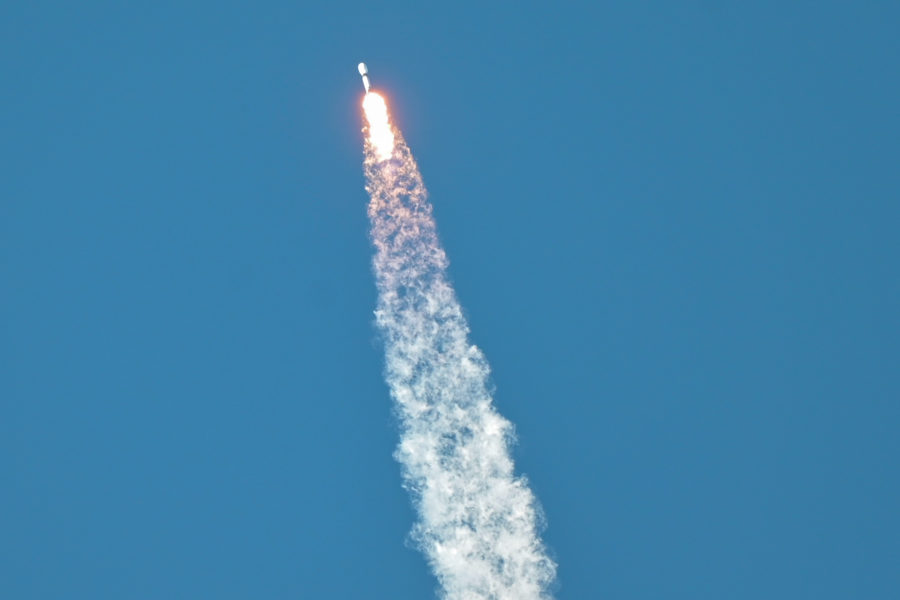In its annual review of significant Pentagon weapons programs, the Government Accountability Office found issues with two high-profile Space Force programs: one the service sees as a model of its path forward and another that may end up being a product of the past.
Among other programs, GAO assessed the Space Development Agency’s Proliferated Warfighter Space Architecture (PWSA), which is based on a vision of hundreds of small satellites going up in low-Earth orbit every few years with new capabilities in “tranches.” The office also looked at the Next Generation Overhead Persistent Infrared (Next-Gen OPIR), a group of four planned highly capable missile warning satellites.
The PWSA, while one program, will have several roles. Some satellites are part of the so-called Transport Layer for communications, while others are part of the Tracking Layer to observe missiles and other objects.
The GAO reviewed each layer separately in its report, since different technologies and contractors are used. The SDA wants the program to be modular and open to new technologies and refreshed small satellites every two years. SDA officials acknowledge their model is not typically how the U.S. government designs weapons programs.
“SDA faces challenges with integrating a complex system of multiple vendors and segments into a proliferated constellation of hundreds of satellites, intended to be enhanced every two years,” the GAO report states.
According to the GAO, the Tracking Layer plans to be tested in March 2026 prior to operations. The SDA plans for the Transport Layer are slightly ahead of schedule for the Tracking Layer, which is “intended to be an incremental evolution from the Tranche 0 Tracking Layer,” the GAO wrote. But Tranche 0 is not yet fully up—the second Tranche 0 launch is planned for this month, after the first one in April. The SDA plans to test Tranche 1 Transport Layer in September 2024, the GAO said. The GAO report was released June 8 but is only current as of January 2023.
Growing pains are not a new concern for the PWSA. In comments to the GAO, the program office said it is “delivering resilient, responsive, threat-driven space-based capabilities to the warfighter.”
Importantly, it added that the SDA “values schedule and speed.”
In April, the SDA said the first parts of Tranche 1 would be fielded by the end of 2024.
SDA’s model is seen as the way of the future, in some form or another, for the USSF. Department of the Air Force leaders say they would rather invest in increased numbers of cheaper satellites rather than fewer ones that cost hundreds of millions of dollars with long timelines and lengthy requirements.
That issue is precisely one noted by GAO for another program, the Next-Gen OPIR satellites—a group of highly capable and highly expensive missile warning spacecraft designed to track objects such as hypersonic missiles.
GAO estimated the cost of the program to be just over $6 billion and stated it had much work to do to meet a 2025 launch timeline. According to the GAO, there are “several high-risk” parts of the program.
Last year, GAO estimated the cost of Next Gen-OPIR to be $5.6 billion, roughly 9 percent less than this year’s figure. It will also probably be late, the GAO added.
“Our review of this program indicates that delivery of both payloads and the first launch are likely to be delayed,” the GAO wrote. The primary payloads are infrared sensors.
The Space Force has public concerns of its own. In its fiscal 2024 budget, which could be changed by Congress, the USSF cut one of the original three planned geosynchronous orbit satellites. There are also two highly elliptical orbit satellites as part of the program, which provide polar coverage.
Testifying before Congress in March, Chief of Space Operations Gen. B. Chance Saltzman said OPIR still had a critical, “no-fail” mission the service planned to deliver. But long-term, Saltzman added, “GEO satellites are too much of a target.”
“The architecture that we really need is one that’s survivable in a contested domain,” he added.
